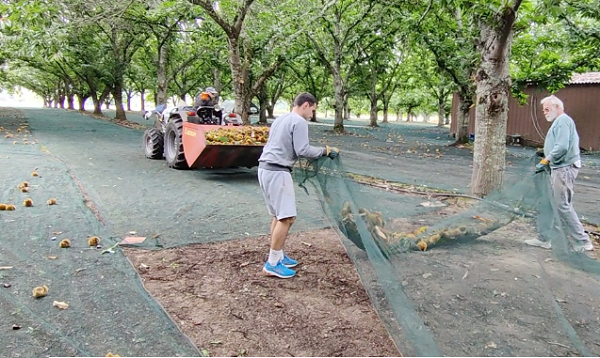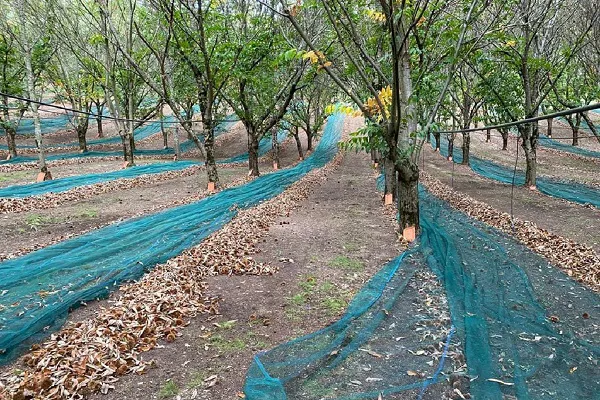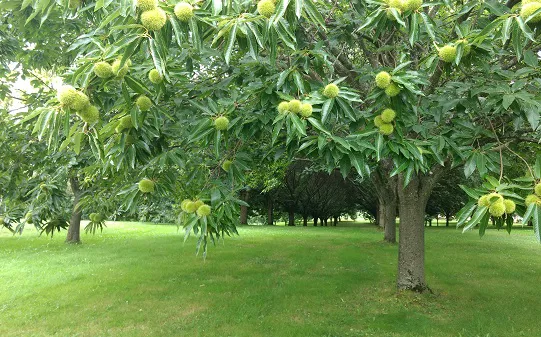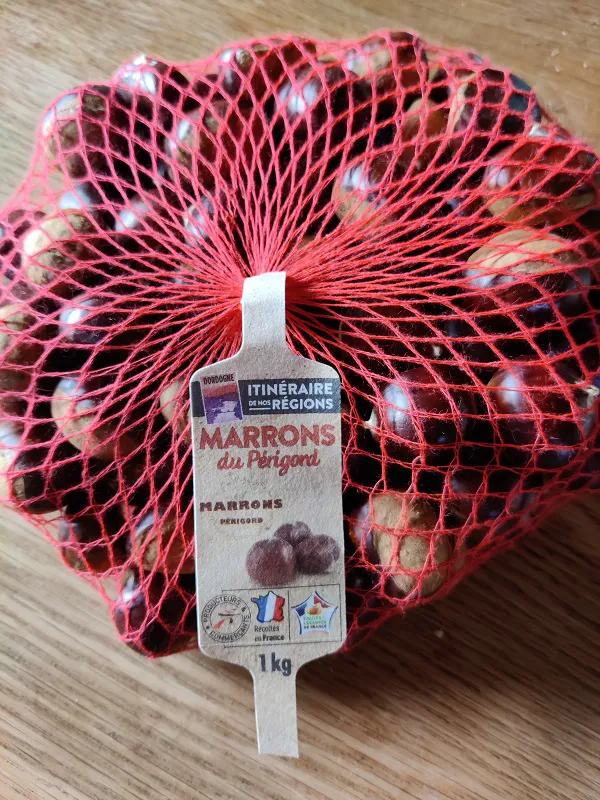Produced on more than 1,800 hectares, the harvest of chestnuts of Périgord-Limousin for the fresh market has already come to an end, and the harvest for processing is almost over.


2023: “Small harvest, below predictions”
“This year's harvest will be smaller than in 2022, which was a year of high production,” explains Géraldine Maignien of the Interprofessional Chestnut Union Périgord - Limousin - Midi-Pyrénées. The hot and dry weather during the harvest (September/October) “impacted production and led to internal sanitary problems (mold). As a result, a good part of the harvest was wasted.”
This year's production should eventually reach only 3,000 tons, compared with 4,000 tons last year. “With the increase in production in southwestern France thanks to new plantings over the last 10 years, we should be seeing an upward curve as new volumes of chestnuts arrive, but unfortunately this will not happen this year.”
 Périgord-Limousin chestnuts are produced from mid-September to late December on 800 farms. Production covers the French departments of Dordogne, Lot, Corrèze, Haute-Vienne, Charentes and Lot-et-Garonne.
Périgord-Limousin chestnuts are produced from mid-September to late December on 800 farms. Production covers the French departments of Dordogne, Lot, Corrèze, Haute-Vienne, Charentes and Lot-et-Garonne.
80% for the fresh market and 20% for processing
“When calculating the trade balance, we see that chestnut consumption in France has increased. France imports and exports chestnuts. French production varies from 8,000 to 10,000 tons, depending on the year. “80% of the production is destined for the fresh market and 20% for processing (processed products such as chestnut cream or vacuum-packed chestnuts). Of these 8,000 tons, France exports 2,400 tons. The imports of fresh chestnuts vary between 5,000 and 8,000 tons, depending on the year (7,500 tons of fresh chestnuts were imported in 2020), and 3,200 tons for peeled chestnuts, to cover the needs of processing companies.”
“We want to keep our planting momentum”
Faced with ever-increasing demand for peeled chestnuts, “our development strategy is to continue to plant in our production basin, as we are not self-sufficient in this segment, and French operators are looking for home-grown products, especially from southwestern France. We are therefore trying to steer growers towards varieties specific to this segmentation with new plantings.”
 Since 2022, the work of producers in southwestern France has been highlighted with the “Périgord-Limousin chestnut” brand.
Since 2022, the work of producers in southwestern France has been highlighted with the “Périgord-Limousin chestnut” brand.
A “committed” sector
“The producers of Périgord-Limousin chestnuts use sustainable agricultural practices on a daily basis, including responsible water management, agroforestry and minimal use of pesticides and chemical fertilizers. Through these actions, the sector does everything possible to preserve biodiversity, as well as raise and protect producers. For example, measures have been put in place to encourage bats in orchards, and thus contribute to the preservation of these species which are so beneficial to the ecosystem.”
A guide to train managers of fruit and vegetable departments
“We realized that there was a complete lack of knowledge about the product,” explains Géraldine Maignien. Fresh chestnuts are often found alongside other nuts and dried fruit on supermarket shelves. “There is a lot of work to be done in this area because at room temperature, the quality really deteriorates. Operators make great efforts to offer a quality product, but once dispatched, the cold chain is not respected.” For this reason, the sector has published a professional guide for buyers, with the help of Interfel, in order to teach them all about the special characteristics and preservation methods of fresh chestnuts, and how to promote them on the shelves.
For more information:
Géraldine Maignien
Union Interprofessionnelle Châtaigne Périgord - Limousin - Midi-Pyrénées
Immeuble consulaire
Tulle Est - BP 30 19001 TULLE CEDEX
union.chataigne@gmail.com
